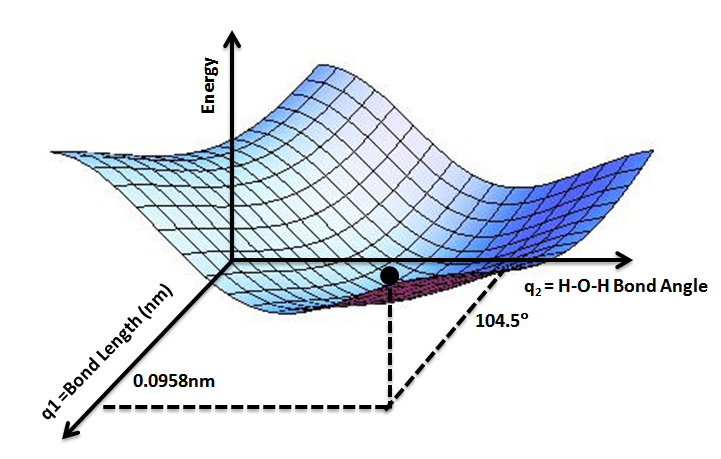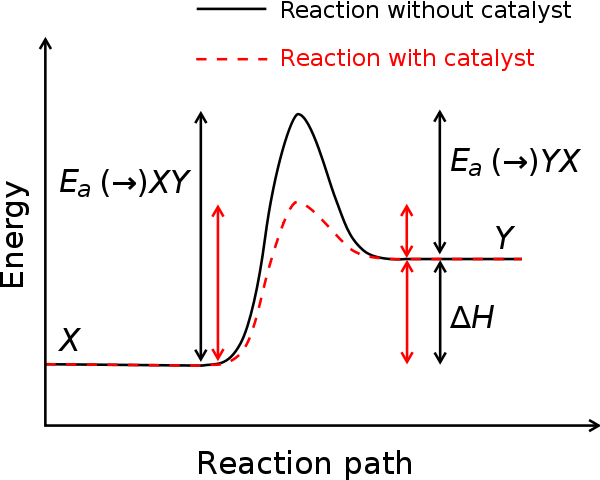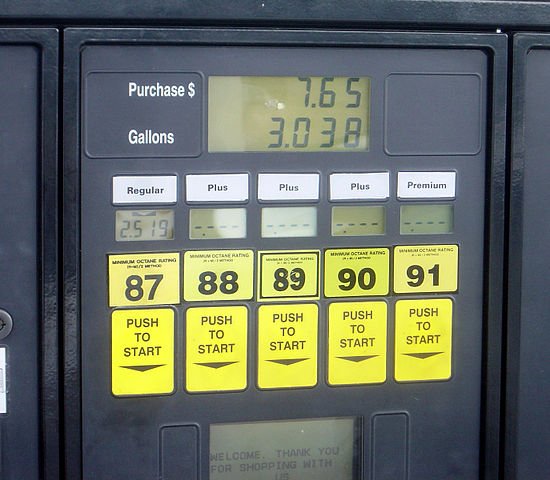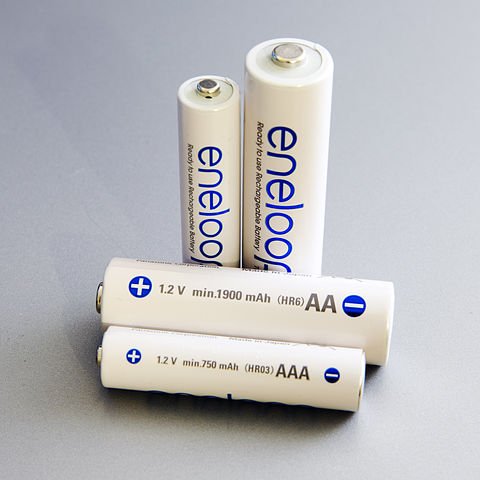Hello, dear readers. So far in my previous post on fuels and energy changes, I only considered breaking of bonds, which requires energy, but I still have not answered the question: where does the energy come from that is released when fuels burn in oxygen?

If it takes energy to break bonds, the same amount of energy must be released when bonds are formed. This reflects the first law of thermodynamics (also called the law of conservation of energy), thus: energy can neither be created nor destroyed.
This certainly applies to chemical reactions, Take hydrogen, for example:
H – H(g) → H(g) + H(g) ΔHꝋ = +436 kJ mol-1
H(g) + H(g) → H – H(g) ΔHꝋ = -436 kJ mol-1
Note that bond making is exothermic.
Energy changes in bond breaking and making
We are now in a position to look at energy changes from bond breaking and bond making. For example, when hydrogen burns in oxygen:
H – H(g) + ½ O = O(g) → H – O – H(g)
E(H – H) + ½ E(O = O) → 2 × -E(O – H)
+436 + ½ (498) → 2 × (-464)
The enthalpy change for this reaction is:
AH = +436 + 249 + (-928) = -243 kJ mol-1
So: The energy given out when fuels burn is the difference between the energy required to break bonds and the energy released when bonds are made. This can shown on an enthalpy profile diagram (energy level diagram).

USING BOND ENERGIES TO ESTIMATE ENTHALPY CHANGES OF REACTION
Average bond energies can be used to estimate the enthalpy changes for different reactions.
EXAMPLE
Calculate the energy released when 1 mole of methane burns completely in oxygen using the average bond energy data in the table below:
| Bond | E(X-Y)/kJ mol-1 |
|---|---|
| C – C | +347 |
| C = C | +612 |
| C ≡ C | +838 |
| C – H | +413 |
| C – O | +358 |
| C = O (in CO2) | +805 |
| H – H | +436 |
| O – H | +464 |
| O = O | +498 |
ANSWER
Step 1. Write down the equation for the reaction:
CH4(g) + 2O2(g) → CO2(g) + 2H2O(g)
Step 2. Draw out full structural formulae to show all the atoms and bonds:
Step 3. Write down which bond energies you will need to look up, and decide whether bonds are broken (endothermic) or formed (exothermic).
Using the data in the table above:
Bond breaking
4E(C – H) + 2E(O = O)
4 × +413 + 2 × +498
= +2648
Bond making
2 × -E(C = O) + [4 × -E(O – H)]
2 × -805 + 4 × -464
= -3466
ΔHꝋ = +2648 + (-3466)
= -818 kJ mol-1
The standard enthalpy change of combustion of methane is 890 kJ mol-1. This is different from the value obtained in the Example above because the standard state of water is liquid at 298 K. When dealing with bond energies, all the molecules must be in the gaseous state, and energy is released when gaseous water condenses.
The standard enthalpy change of combustion of methanol is -726 kJ mol-1. This is less than the value for methane, so why is there a difference? Fuels release their energy when they form bonds with oxygen. The two compounds have the same number of carbon and hydrogen atoms, but one O – H bond is already formed in the methanol molecule.
When methane reacts, all four O – H bonds must be made, which gives a more exothermic reaction. Fuels that contain oxygen are sometimes called oxygenates; they usually have a lower enthalpy change of combustion than fuels with the same number of carbon atoms, but without oxygen.
Methanol as a fuel
Methanol powers the engines of Formula One motor racing. These are some of the advantages that make it an ideal fuel for high performance engines:
- It has a high octane number, meaning that it does not knock (prematurely explode) when the gases are compressed by a piston in an engine.
- Although flammable, it is less volatile than petrol, and if a fire starts it is easier to put out because methanol is miscible (mixes) with water.
- Methanol is an oxygenate, and so less oxygen is required to fully combust it in a car engine. (in contrast, in cars using petrol, carbon monoxide is a major pollutant, formed because not enough oxygen is taken in for full combustion.)
- It is fairly cheap to produce. It can be made from natural gas or coal, or from methane through the decomposition of rotting waste (making it a biofuel).
- It can be blended with petrol (as is done in several countries).
Too good to be true? Well, there are problems using methanol. - It is a highly toxic alcohol, so the vapour is a hazard when refuelling.
- It produces methanal as a pollutant from the exhaust, an aldehyde that is carcinogenic (causes cancer).
- It absorbs water from the air and is very corrosive in existing petrol tanks.
Will methanol become more popular as a fuel? A recent study suggests that by 2050 it could provide half of the global liquid fuel requirements, given advances in technology to overcome these problems.

BREAKING AND MAKING MORE BONDS
Octane (molecular formula C8H18), one of the chemicals in petrol, has 18 C – H bonds and seven C – C bonds. Methane has just four C – H bonds. While this means that you need more energy to break the bonds in a mole of octane, far more energy is released when new bonds are formed with oxygen.
The standard enthalpy change of combustion of octane is -5470 kJ mol-1.
Energy density
Most means of transport have to carry their own fuel around vith them – think of petrol in the tank of a car. So we want to obtain the maximum energy we can from any mass of fuel. With transport fuels we need to know the amount of energy released by 1 kg of fuel. We call this the energy density of the fuel. To calculate the energy density we need to know the standard enthalpy change of combustion (ΔHꝋc) and the mass of one mole of the fuel.
Petrol has an energy density of approximately 46 000 kJ/kg, which makes it a very concentrated energy source. It is a mixture of many hydrocarbon. Hydrogen appeared to have excellent prospects as a fuel of the future. But there is still the problem of how to store it on board a vehicle.
Metal hydrides: the key to on-board hydrogen storage?
One major disadvantage of hydrogen as a fuel is how to store it. Liquefying it means cooling it to -253°C, which costs four times more than making an equivalent amount of petrol. It also takes energy to do this. Then it has to be kept cold. The expense is worth it for the Space Shuttle, but it is no surprise that other storage methods are being sought for more general uses of hydrogen as a fuel.
One possible method is to store hydrogen as a solid. This doesn’t mean freezing it, which takes too much energy, but combining it as a metal hydride. Magnesium hydride, MgH2, is 7.7 per cent hydrogen by mass.
A litre of magnesium hydride contains almost as much hydrogen as a litre of liquefied hydrogen, though it is a lot heavier. The hydrogen is released by this reaction:
MgH2(s) + H2O(l) → Mg(OH)2(s) + H2(g)
In magnesium hydride, magnesium is ionicaly bonded to hydrogen in a small whole-number ratio. But another type of metal hydride – an interstitial hydride – can soak up hydrogen rather like a sponge. The metal is bathed in hydrogen. At the metal surface, the hydrogen molecule splits into its atoms and the atoms occupy holes in the metal lattice. Very large quantities of hydrogen can be absorbed and released on heating. There remains the problem of the weight of the hydride, but chemists are actively searching for new alloy hydrides of lower weight.

ACTIVATION ENERGY, ENERGY PROFILES AND THE COLLISION THEORY
HOW A REACTION GETS STARTED
As we have seen, octane, one of the components of petrol, has an enthalpy change of combustion of -5470 kJ/mol. So why doesn’t it burst into flames as soon as it is exposed to oxygen in the air? The reason is that it takes energy to break bonds. This must happen before oxygen molecules and octane molecules can react together.
To break all the bonds in oxygen and octane vapour would require +7437 kJ mol-1 of energy a very large amount. So, in fact, it appears difficult for octane to start reacting at all. Yet we know that a match thrown on to petrol causes it to react spectacularly. Clearly, not all the bonds need to be broken before other bonds start forming, and once bonds start to form, energy is released to break other bonds. This keeps the reaction going.
The minimum energy required for a reaction to start is called the activation energy, Ea. When this energy is supplied to molecules in the system, the bonds begin to stretch and break. Reactions usually occur because the molecules collide with enough energy to make this happen. Sometimes there is sufficient energy in the system for a reaction to occur at room temperature, but for petrol in an engine, energy needs to be supplied to reach the activation energy level. This energy comes from a spark.
Chemists draw energy profiles, or enthalpy profiles, for reactions, such as those in the figure below. They show how the energy changes as the reactions proceed.
Why do endothermic reactions take place?
When a spark ignites petrol, there is a spontaneous reaction with oxygen, which produces carbon dioxide and water. It does not matter that energy was needed to start this reaction – once started, it is spontaneous (takes place of its own accord). Let’s consider the spontaneous combustion of octane, which is one of the compounds in petrol:
2C8H18(g) + 25O2(g) → 16CO2(g) + 18H2O(g)
We know that this is an exothermic reaction and that energy is released to the surroundings because the energies of octane and oxygen are higher than the energies of carbon dioxide and water. So I could say that for a reaction to occur it must be exothermic. However, this does not explain spontaneous reactions that are endothermic such as the reaction between nitrogen and oxygen to produce nitrogen monoxide:
N2(g) + O2(g) → 2NO(g) ΔH = +180 kJ/mol
As this reaction is a major cause of pollution from vehicle exhausts, we know that it happens spontaneously in the high temperature of a petrol engine. To understand why spontaneous reactions occur we must seek another explanation that involves entropy. This and many more I would explain in my next post.
Thank you for reading.
REFERENCES
https://www.thoughtco.com/definition-of-bond-energy604838#:~:text=Bond%20energy%20
https://www.khanacademy.org/science/chemistry/thermodynamics-chemistry/enthalpy-chemistry-sal/a/bond-enthalpy-and-enthalpy-of-reaction
https://en.wikipedia.org/wiki/Methanol_fuel#:~:text=Methanol%20fuel%20is%20an%20alternative,and%20has%20lower%20energy%20density.
https://www.bbc.co.uk/bitesize/guides/zsxn82p/revision/1#:~:text=Breaking%20and%20making%20bonds&text=Energy%20is%20absorbed%20to%20break%20bonds.,making%20is%20an%20exothermic%20process.
https://www.researchgate.net/publication/223731432_Metal_hydride_materials_for_solid_hydrogen_storage_A_review
https://www.sciencedirect.com/science/article/pii/S0360319919302368
https://fs.blog/2017/06/activation-energy/
https://bio.libretexts.org/Bookshelves/Human_Biology/Book%3A_Human_Biology_
http://www.chem4kids.com/files/react_intro.html#:~:text=Chemical%20Reactions&text=Reactions%20occur%20when%20two%20or,created%20to%20form%20new%20molecules.
https://www.khanacademy.org/test-prep/mcat/chemical-processes/thermochemistry/a/endothermic-vs-exothermic-reactions
https://socratic.org/questions/why-do-endothermic-reactions-happen
http://www.sciencemadesimple.co.uk/curriculum-blogs/chemistry-blogs/exothermic-and-endothermic-reactions#:~:text=An%20endothermic%20reaction%20occurs%20when,temperature%20decrease%20in%20the%20surroundings.
Thanks for your contribution to the STEMsocial community. Feel free to join us on discord to get to know the rest of us!
Please consider supporting our funding proposal, approving our witness (@stem.witness) or delegating to the @stemsocial account (for some ROI).
Thanks for using the STEMsocial app
and including @stemsocial as a beneficiary, which give you stronger support.